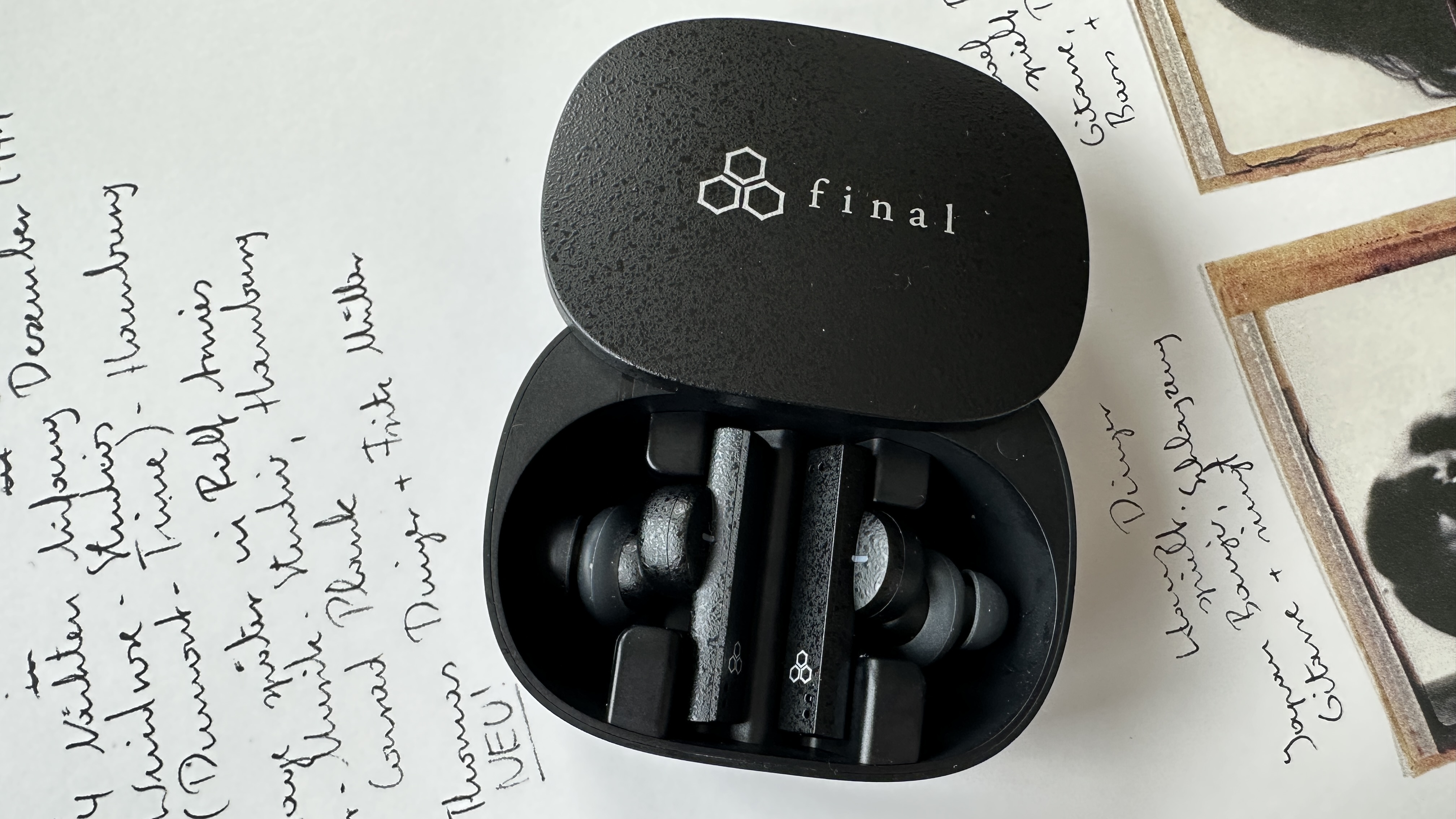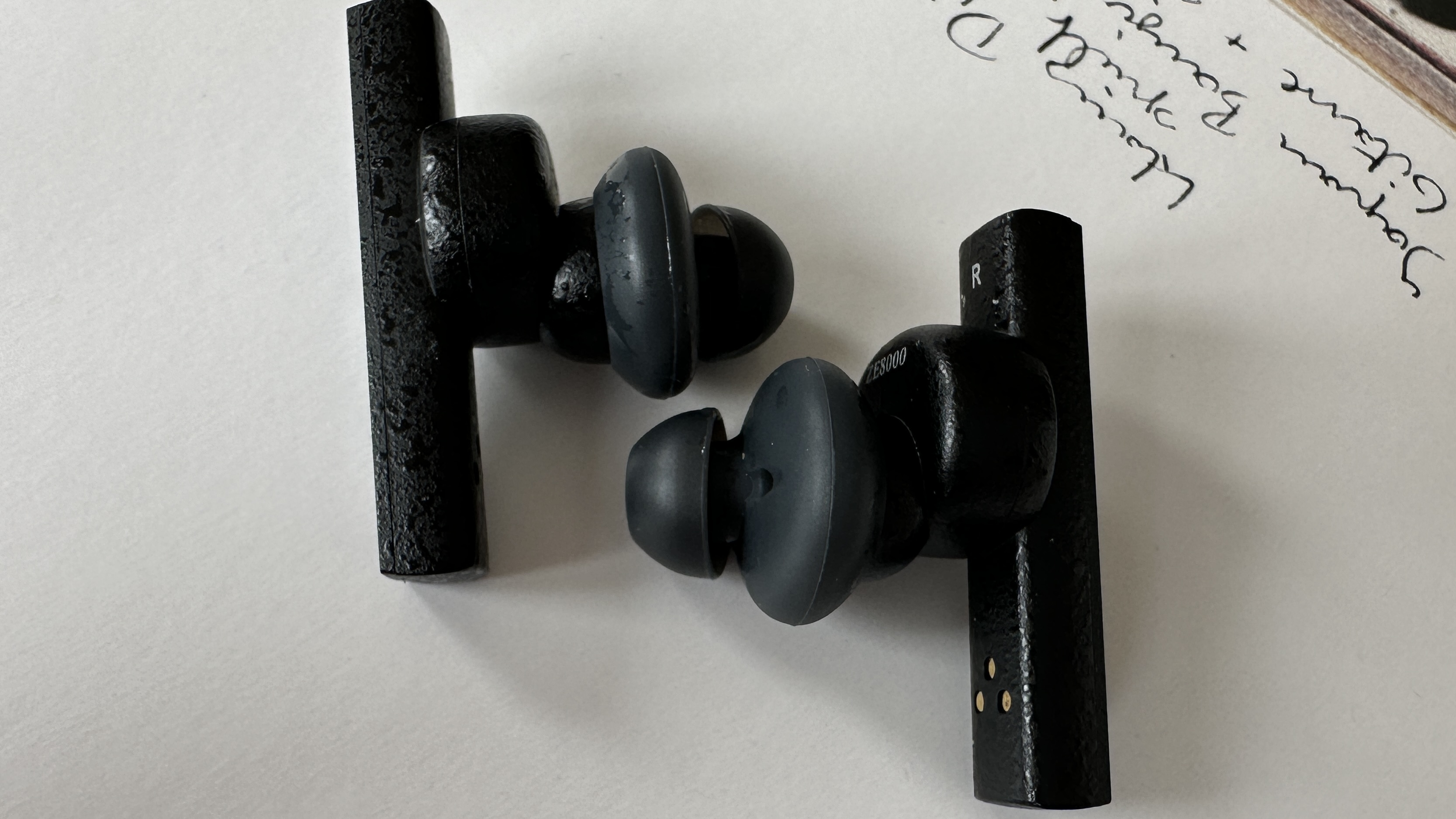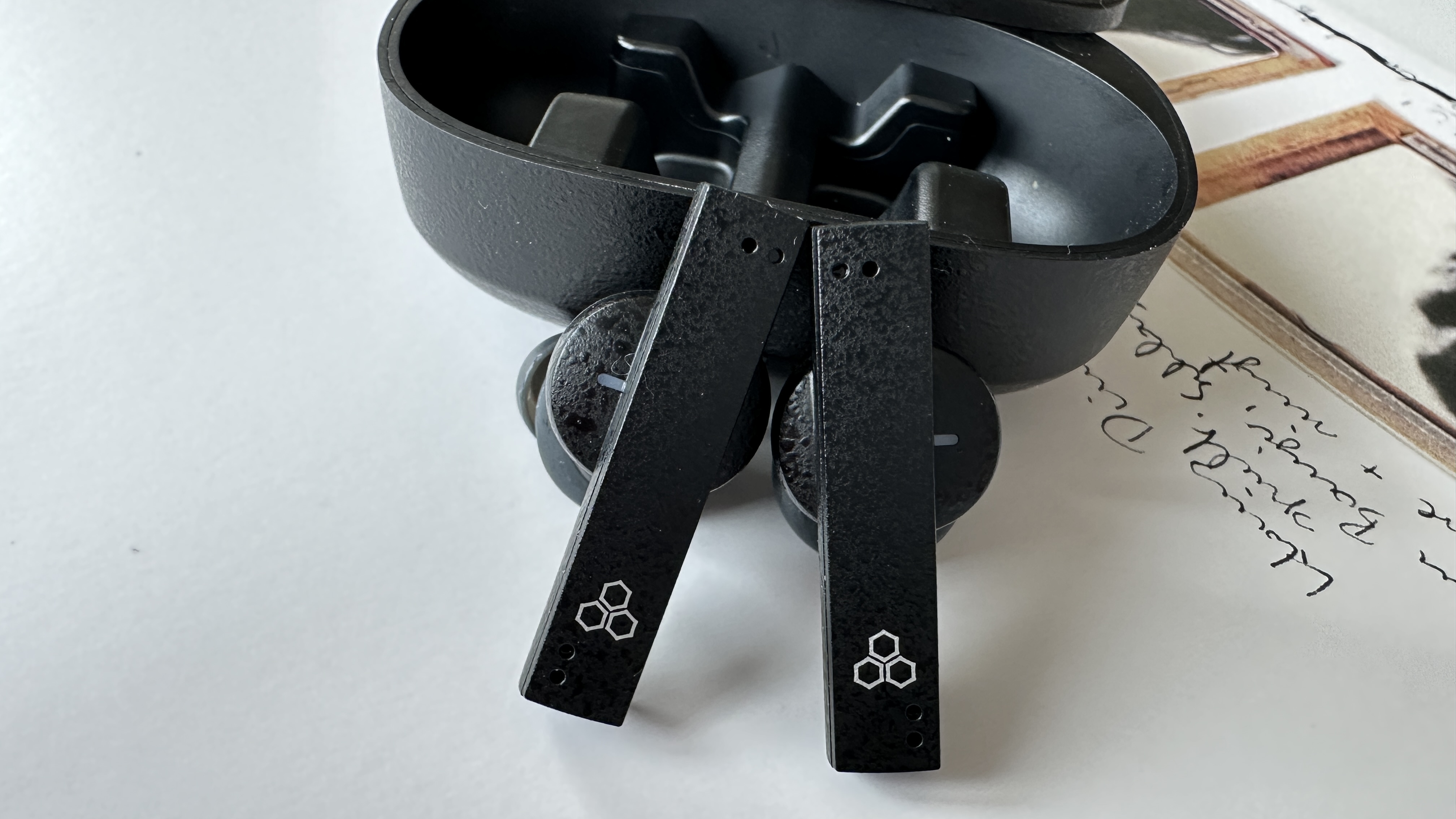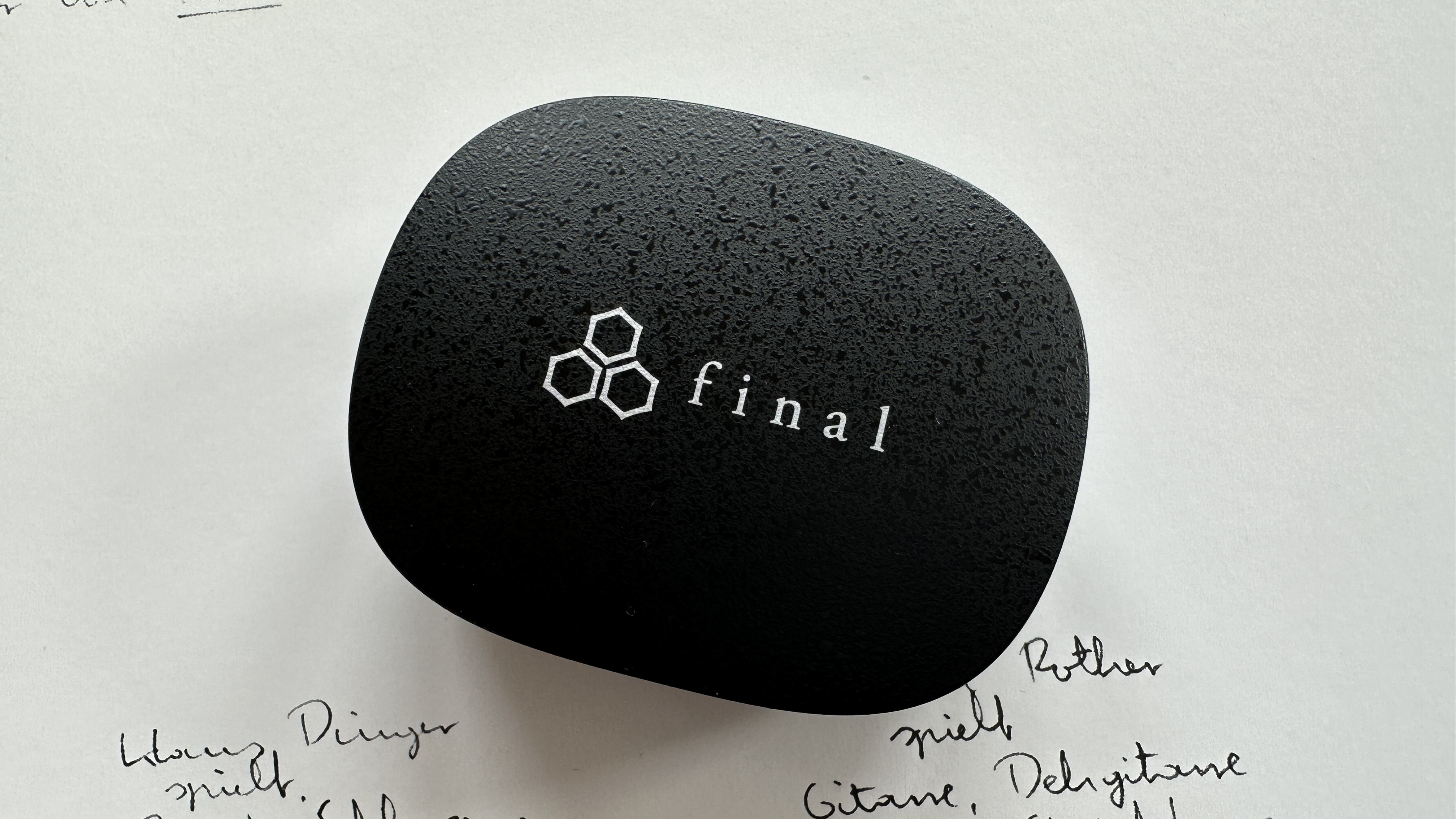Final Audio ZE8000 review: high-end highs and lows
High-end true wireless earbuds from renowned audio brand have highs and lows

In some ways the ZE8000 are admirable - but that’s nothing like enough to compete in a market as competitive as this.
-
+
Detailed, insightful & (mostly) naturalistic sound
-
+
Great specification
-
+
Useful control app
-
-
Humdrum noise-cancellation
-
-
Even more humdrum battery life
-
-
Lacking bass weight
-
-
Slapdash touch controls
Why you can trust T3

For a company that likes to have a product at every price-point (you can pay anything from twenty quid to five grand for a pair of its headphones), Final Audio certainly took its time getting on board the true wireless headphones bandwagon.
Its first models only came to market in 2022, and it’s taken until now, with the launch of the ZE8000, for it to line up (in price terms, anyway) against the most high-profile players.
Final Audio knows what it’s doing, of course - but the market for premium true wireless in-ear headphones is about as competitive as they come. So can the company crash a party that’s been over capacity for quite some time already with the ZE8000?
Final Audio ZE8000: Price & Availability

The Final Audio ZE8000 is on sale now, and in the United Kingdom the box and its contents will cost you around £289. In America you’re looking at $349 or thereabouts, while in Australia the going rate is AU$499 or so.
You don’t need me to tell you this is upper-tier, high-end money for a pair of true wireless earbuds - some T3.com favourites cost considerably less. Final Audio had better have something special for us all if it’s going to make that asking price seem realistic.
Final Audio ZE8000 review: Feature & What's New?

The ZE8000 use Bluetooth 5.2 for wireless connectivity (they go without multipoint connectivity, it’s worth noting), and they’re compatible with SBC, AAC, aptX and aptX Adaptive codecs. This means genuinely high-resolution audio content (up to 24bit/96kHz) is on the menu.
You won’t be listening to those hi-res files for perhaps as long as you might be expecting without a visit to some mains power though. Despite their impressive size, the earbuds hold just five hours of ‘go’, while the charging case has two more charges on board. We don’t have time, or space, to list all the true wireless alternatives that can outperform the ZE8000 where battery life is concerned.
Get all the latest news, reviews, deals and buying guides on gorgeous tech, home and active products from the T3 experts
The charging case has a USB-C input for power - there’s a short cable supplied in the packaging. There are also five pairs of differently sized 'Type Q' eartips in the box, along with a slender and fiddly tool for replacing the earbuds’ dust filters (as well as some dust filters themselves, naturally).
Unlike every other pair of true wireless earbuds, the ZE8000 don’t use Class D amplification. Instead, Final Audio has decided Class A/B is the way to go - its rationale is that the trade-off in efficiency is worth it for the lower distortion figures. It’s an admirable (or perhaps bloody-minded) decision.
The Class A/B amplification powers Final Audio’s new 'f-CORE' dynamic driver. It’s a full-on piece of engineering: a lightweight aluminium/magnesium dome is injection-moulded into the middle of a flexible silicone surround, and the copper-clad aluminium wire voice coil leads connect using a floating mechanism. This means f-CORE is light, can (as there’s no common adhesive used in its construction) achieve a very stable pistonic motion, and is supposedly the dynamic driver with the lowest total harmonic distortion plus noise (THD+N) of any in-ear monitor.
The ZE8000 are also IPX4-rated, meaning they should be fine in any damp or steamy environment - for at least as long as their battery lasts.
Final Audio ZE8000 review: Performance

Like almost every pair of true wireless in-ear headphones, the sound of the Final Audio ZE8000 can be affected (for both good and bad) by the way the earbuds fit in the wearer’s ears. The ZE8000 are, though, probably more in thrall to the way they’re fitted than any alternative. So it’s just as well there are those five pairs of eartips in the package to make sure you get the fit these earbuds require.
Once they’re in position, there’s quite a lot to enjoy about the way the ZE8000's sound. Certainly from the top of the frequency range (which is bright, substantial and carries an awful lot of detail) down to the bottom of the midrange (which is equally information-rich, equally varied where texture and timbre are concerned, and equally convincing) they’re enjoyable and winningly naturalistic. Tonality is consistent, and the generous nature of the soundstage the ZE8000 create means even complex recordings are laid out well and easy to follow.
There’s good dynamic ability on display too, both where the nuts-and-bolts of getting from ‘quiet’ to ‘loud’ promptly and the second-stage harmonic variations evident in voices or instruments are concerned. In fact, the way the Final Audio deal with voices is one of the most impressive and engaging things about them - they give singers of all types plenty of character and plenty of attitude. There’s more than enough space for a vocalist to do their thing, but never any hint of estrangement or separation from the recording as a whole.
It’s the lower frequencies that are slightly problematic. Final Audio’s claims for frequency extension down to 20Hz seem fair enough, and the same prodigious levels of detail are apparent in bass information just as surely as they are everywhere else - but there’s an obvious lack of substance and heft to the low frequencies the ZE8000 produce that makes them sound rather underpowered and puny. Bass doesn’t hit with any determination, and as a result there’s a slight lack of drive to the overall presentation. Rhythmic expression is tentative and bottom-end dynamic headroom is curtailed.
The active noise-cancellation (ANC) is no more successful, either. In the bluntest terms, it’s just not all that effective - external sounds are reduced somewhat, sure, but ‘cancelled’? Not a chance. Ambient sound, unless it’s very quiet to begin with, is always present - just not at quite the same level of intensity it is when you switch noise-cancelling ‘off’ or take the earbuds out altogether. There are many, many better options out there - almost all more affordable - when it comes to keeping the sound of the outside world at bay.
Final Audio ZE8000 review: Design & Usability

The ZE8000 are quite large earbuds, and they’re made to seem larger still thanks to a kind of terraced design that keeps a lot of their hardware out of the wearer’s concha. Their ‘Type Q’ eartips are an equally sizeable two-tier affair - ergonomic concerns have taken considerable precedence over discretion here. An all-in weight of 6.8g per earbud is a) more than the average and b) tells its own story.
It follows that the charging case is one of the bigger designs around: at 32 x 78 x 62mm it’s no candidate for the back pocket of your garment. Its sliding lid is a nice design touch, no doubt, but it mitigates the bulk of the case only slightly.
The ZE8000 are available in black or white colourways, and each finish is in the ‘Shibo’ effect Final Audio is so fond of. The intention is to mimic the texture of paper or leather - and if you like it, it makes the ZE8000 and their case look interestingly dappled. If you don’t, it might seem like your earbuds and their case are in need of a good wipe. Be aware that Final Audio has gone to considerable lengths to apply this finish to the resin material of this product, though - it’s much more commonly found on the metal housings of cameras and what-have-you.
As far as usability is concerned, you’ve a few options. There a big capacitive touch surfaces on the body of each earbud - here’s where you can deal with ‘play/pause’, ‘volume up/down’, ‘skip forwards/backwards’, ‘answer/end/reject call’ and ‘wake voice assistant’ (the ZE8000 are compatible with your source player’s native assistant). It’s worth noting, though, that these touch controls are far from the most responsive - despite the relatively large area, they are quite hit-and-miss in operation, and take their sweet time to act on your instructions. Voice-assistant interaction is much more successful, thanks to the beam-forming mics on each earbud (and that’s true of call quality, too).
The Final Connect control app is where the real action is, though. Free for iOS and Android devices, it puts you in charge of four modes of noise-cancellation (‘ANC’, ‘wind cut’, ‘voice through’ and ‘ambient sound’) and a four-band EQ control. It’s where you can engage ‘8K Sound+’ (which Final Audio, with no apparent sense of hyperbole, suggests “upgrades the digital signal processing algorithm to a higher level and utilises the computing power of the ZE8000 at its maximum limit”). It’s where you can check for firmware upgrades. If only it would allow you to rearrange the touch controls (so you didn’t, for example, have to use five taps to wake your voice assistant), it would be getting on for ideal. As it is, it’s clean, logical and stable - which are all good things.
Final Audio ZE8000 review: Verdict

In some ways, the Final Audio ZE8000 make a very strong case for themselves - their naturalistic sound, extensively detailed reproduction and midrange fidelity is very persuasive indeed. But they’re too compromised, and in too many areas, to get close to earning a recommendation among the best true wireless headphones.
Also consider
For the best noise-cancelling around, you want the Bose QuietComfort Earbuds II. For out-and-out sound quality, try the Grado GT220. For an all-rounder that gets there-or-thereabouts in every area, it’s hard to look beyond Sony’s long-serving WF-1000XM4.
Simon Lucas is a freelance technology journalist and consultant, with particular emphasis on the audio/video aspects of home entertainment. Before embracing the carefree life of the freelancer, he was editor of What Hi-Fi? magazine and website – since then, he's written for titles such as Wired, Metro, the Guardian and Stuff, among many others. Should he find himself with a spare moment, Simon likes nothing more than publishing and then quickly deleting tweets about the state of the nation (in general), the state of Aston Villa (in particular) and the state of his partner's cat.
